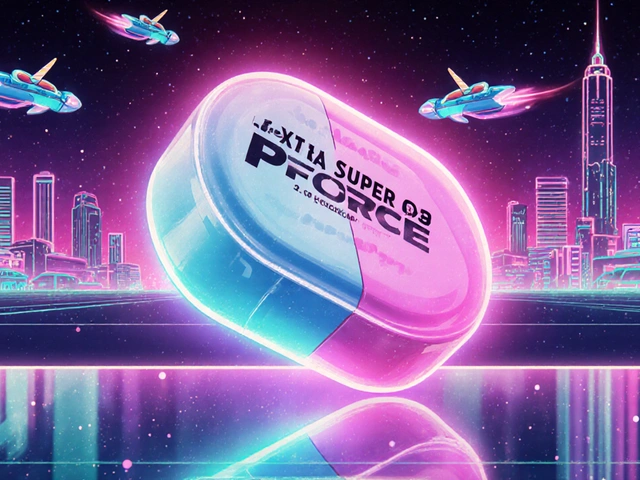Shingles isn’t just a rash. For many people, it’s months of burning pain that won’t go away-even after the blisters heal. That’s because shingles is caused by the same virus that gives you chickenpox. Once you’ve had chickenpox, the virus stays hidden in your nerves. Years later, it can wake up and cause shingles. And the older you get, the more likely it is to happen. About 1 in 3 adults will get shingles in their lifetime. The good news? There’s a vaccine that works extremely well: Shingrix.
Who Needs the Shingles Vaccine?
You don’t need to wait until you’re 70 to think about the shingles vaccine. The CDC recommends Shingrix for everyone aged 50 and older, no matter if you’ve had shingles before or not. Even if you got the old vaccine (Zostavax), you still need Shingrix-it’s far more effective.
What if you’re younger than 50? You might still need it if your immune system is weakened. That includes people with HIV, those on chemotherapy, organ transplant recipients, or anyone taking long-term steroid medications. For these adults aged 19 and older, Shingrix is not just safe-it’s essential. The old vaccine wasn’t allowed for these groups because it used a live virus. Shingrix doesn’t. It’s made from a piece of the virus, not the whole thing. That’s why it’s safe for people with compromised immune systems.
People with diabetes, heart disease, or lung conditions are also at higher risk for severe shingles. The American Association of Clinical Endocrinology specifically recommends Shingrix for adults with diabetes. If you have a chronic illness, talk to your doctor. You’re not just protecting yourself from a rash-you’re preventing long-term nerve damage that can last for years.
When Should You Get It?
Shingrix is given in two doses. The first shot gets the job started. The second shot makes sure your protection lasts. The standard gap between doses is 2 to 6 months. That’s the sweet spot for maximum immunity.
But there are exceptions. If you’re immunocompromised and about to start treatment that weakens your immune system-like chemotherapy or a transplant-you can get the second dose as early as 1 month after the first. The absolute minimum is 4 weeks. If someone accidentally gives you the second shot too soon, you’ll need to repeat it after waiting the full 4 weeks.
Timing matters. If you just had shingles, wait at least one year before getting vaccinated. Your body is still fighting the virus, and vaccinating too soon might not give you the best protection. If you’re unsure, ask your doctor. They can check your medical history and give you the right timeline.
There’s no upper age limit. People in their 80s and 90s benefit just as much as those in their 50s. In fact, the risk of shingles and its worst complication-postherpetic neuralgia (PHN)-goes up with age. PHN can turn everyday things like a shirt brushing your skin into unbearable pain. Shingrix cuts the risk of PHN by over 90% in older adults.
How Effective Is Shingrix?
Shingrix is one of the most effective vaccines ever made for adults. Clinical trials showed it prevents shingles in more than 90% of healthy adults aged 50 and older. Even for people over 70, it still works at over 90% effectiveness. That’s a huge jump from the old vaccine, Zostavax, which only worked about half the time.
And it lasts. Data from the CDC shows protection stays strong for at least 7 years after the second dose. Studies are still tracking longer-term results, but so far, there’s no sign it wears off quickly. That’s why you don’t need a booster right now.
What about side effects? You’ll likely feel them. About 8 out of 10 people get pain, redness, or swelling at the injection site. Nearly half feel muscle aches. One in three feels tired or gets a headache. Some even get a fever. These usually last 2 to 3 days. They’re not dangerous-they’re your immune system doing its job.
People often say, “I felt worse after the second shot.” That’s normal. The second dose triggers a stronger immune response. That’s why it’s so effective. If you’re planning a big trip, a wedding, or a busy work week, don’t schedule it right after your shot. Give yourself a couple of days to recover.

What About Cost and Insurance?
Shingrix costs around $185 to $220 per dose in the U.S., depending on where you get it. That’s two doses, so total out-of-pocket could be $370-$440. But most people pay much less-or nothing.
Medicare Part D covers Shingrix. You might still pay a copay, but it’s usually under $50 per dose. Private insurance plans also cover it under preventive services. If you’re uninsured, some pharmacies offer discount programs. Community health centers often have vaccines at reduced prices.
Don’t let cost stop you. Shingles can cost thousands in medical bills if it leads to complications. One study found that treating PHN can cost over $10,000 in the first year. Vaccination is cheaper, safer, and far less painful.
Why Shingrix Over the Old Vaccine?
Zostavax, the old shingles vaccine, was discontinued in 2020. It was a live virus vaccine, which meant it couldn’t be given to people with weak immune systems. It also only worked about half the time. Shingrix replaced it because it’s better in every way: more effective, longer-lasting, and safe for more people.
There’s no reason to use Zostavax anymore. Even if you got it in the past, you still need Shingrix. The CDC says so. Your doctor will tell you the same. The science is clear: Shingrix is the only vaccine you need now.
What If You’re Not Sure?
Some people worry about side effects. A 2024 Kaiser Family Foundation survey found that 41% of adults aged 50+ didn’t get vaccinated because they were afraid of reactions. But here’s the truth: the pain from shingles lasts months. The side effects from the vaccine last days.
If you’ve had a severe allergic reaction to any ingredient in Shingrix-like gelatin or neomycin-you shouldn’t get it. Otherwise, the risks are minimal. Even people with egg allergies can get Shingrix. It doesn’t contain egg proteins.
Ask your doctor if you’re unsure. Bring your medical history. Mention any medications you’re taking. If you’re immunocompromised, your doctor might need to coordinate with your specialist. But in most cases, getting Shingrix is one of the easiest and most important decisions you can make for your health after 50.
What’s Next for the Vaccine?
GlaxoSmithKline is testing a single-dose version of Shingrix in clinical trials. If it works, it could make vaccination simpler and increase uptake. But that’s still years away. For now, two doses are the standard-and they work.
Experts are also pushing to start vaccinating at age 50, not 65. The risk of shingles rises sharply after 50, and many people don’t realize that. Waiting until Medicare eligibility means missing the window where protection matters most.
By 2030, one in five Americans will be over 65. That means more people at risk for shingles. The best way to protect yourself, your parents, and your loved ones is to get vaccinated now.
Can I get the shingles vaccine if I’ve already had shingles?
Yes. Even if you’ve had shingles, you should still get Shingrix. The vaccine helps prevent future episodes. Wait at least one year after your shingles outbreak before getting vaccinated to make sure your immune system has fully recovered.
Do I need a booster after 5 or 10 years?
No. Current data shows Shingrix provides strong protection for at least 7 years, and there’s no official recommendation for a booster. Studies are ongoing, but as of 2025, two doses are all you need for long-term protection.
Is Shingrix safe for people with autoimmune diseases?
Yes. Because Shingrix is not a live vaccine, it’s safe for people with autoimmune conditions like lupus, rheumatoid arthritis, or multiple sclerosis-even if they’re taking immune-suppressing drugs. Always check with your doctor, but in most cases, it’s recommended.
Can I get Shingrix at the same time as my flu shot or COVID booster?
Yes. Shingrix can be given at the same visit as other vaccines, including flu, pneumonia, or COVID-19 shots. Just use different arms. There’s no evidence it reduces effectiveness or increases side effects when given together.
What if I miss the 2-6 month window for the second dose?
Don’t worry. If you’re late, just get the second dose as soon as you can. You don’t need to restart the series. Even if it’s been a year or more, the second dose will still boost your immunity. Completing both doses is what matters.
Why do some people say Shingrix hurts more than other vaccines?
Shingrix contains an adjuvant-a substance that makes your immune system respond more strongly. That’s why it’s so effective. But it also causes more temporary soreness, fatigue, and muscle aches. It’s a sign your body is building strong protection. Most side effects fade within 48 hours.
What to Do Next
If you’re 50 or older, call your doctor or local pharmacy today. Ask if they have Shingrix in stock. Many pharmacies offer walk-in appointments. Bring your insurance card. If you’re immunocompromised, bring a list of your medications.
Don’t wait for symptoms. Shingles doesn’t always come with a warning. Once it hits, there’s no cure-only ways to manage the pain. The vaccine is your best defense. Two shots. One decision. Years of protection.






shawn monroe
November 28, 2025 AT 11:01Shingrix is a GAME-CHANGER. Seriously. I got it at 52 after a friend got PHN and spent 8 months crying over a towel brushing his skin. 😭 The second shot hit me like a truck-fever, achy as hell, couldn’t lift my coffee cup-but that’s the price of NOT becoming a human scream. 90% efficacy? That’s not a vaccine. That’s a force field. 🛡️
Savakrit Singh
November 29, 2025 AT 05:30It is imperative to note, with empirical precision, that the immunogenicity profile of Shingrix, as delineated in the CDC’s 2024 clinical surveillance reports, demonstrates a statistically significant reduction in postherpetic neuralgia incidence (p < 0.001) across all age cohorts above 50. Furthermore, the adjuvant system AS01B induces a Th1-dominant cytokine response, which is absent in Zostavax’s attenuated live-virus construct. Therefore, the clinical superiority is not merely anecdotal-it is evidence-based, peer-reviewed, and non-negotiable.
Cecily Bogsprocket
November 30, 2025 AT 09:30I know it sounds scary-feeling awful for a couple days after the shot. But I’ve sat with my mom as she cried from shingles pain at 74. That wasn’t just discomfort. It was her whole world shrinking. The vaccine? It’s not about avoiding a little sore arm. It’s about keeping your body yours. You get two shots. You get years of peace. That’s not a cost. That’s a gift you give your future self.
Leo Adi
December 1, 2025 AT 18:08My uncle in Delhi got it last year. He said, ‘It burned like a chili on my arm, but I didn’t get the rash.’ Simple. No drama. He’s 68. Still plays cricket. I’m getting mine next month. No need to overthink it. Just do it.
Melania Rubio Moreno
December 3, 2025 AT 12:27wait so u r telling me i gotta get 2 shots?? like for real?? i thought one was enough?? 😭 i hate needles anyway
Gaurav Sharma
December 3, 2025 AT 22:35Shingrix is not a vaccine. It is a corporate profit engine disguised as medicine. The adjuvant is the real product. Side effects are engineered to create dependency on painkillers. The CDC’s recommendation? A product of pharmaceutical lobbying. You are being manipulated.
Shubham Semwal
December 5, 2025 AT 12:12bro you’re 50 and you haven’t gotten it yet? what are you, a time traveler from 2010? zostavax was garbage. shingrix is the only one that matters. stop being lazy and go get it. your future self will thank you (or cry in pain if you don’t).
Sam HardcastleJIV
December 7, 2025 AT 04:15One must question the epistemological basis of mass vaccination campaigns. Are we truly safeguarding health, or merely reinforcing a biomedical paradigm that pathologizes aging? The statistical reduction in PHN is undeniable-but at what cost to individual bodily autonomy? I remain unconvinced that systemic intervention supersedes personal resilience.
archana das
December 8, 2025 AT 18:20I’m 56 and I got both shots. My arm hurt for two days. I didn’t get shingles. My dad got it at 70 and couldn’t sleep for months. I’m so glad I did it. It’s just two shots. Do it for yourself. You’ve got this.
Emma Dovener
December 9, 2025 AT 09:09My nurse told me to get it even though I have lupus. I was scared. But Shingrix isn’t live-it doesn’t trigger flare-ups. I got it last month. No issues. If you’re immunocompromised, talk to your rheumatologist. But please, don’t skip it. This vaccine saved my peace of mind.
Sue Haskett
December 9, 2025 AT 19:40Don’t wait until you’re in pain to act! Seriously. Don’t. I waited until I was 60. I got the vaccine, but I still got shingles-mild, thank God-but it was enough to make me cry. The second shot? I got it late-14 months later. Still worked. The key? Just finish both doses. Don’t let fear or busyness stop you. Your nerves will thank you.
Jauregui Goudy
December 10, 2025 AT 21:00Look. I’m not a doctor. But I’ve talked to 12 people who’ve had shingles. Every single one said: ‘I wish I’d gotten the shot.’ The side effects? Yeah, you’ll feel like you got hit by a bus. But that’s two days. The pain from shingles? That’s two years. Two shots. That’s it. Go. Do it. Your future self is begging you.